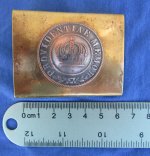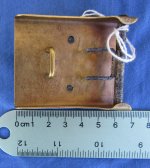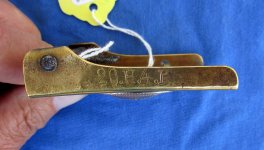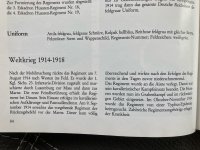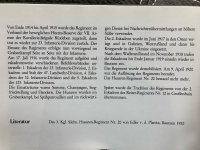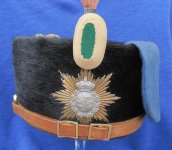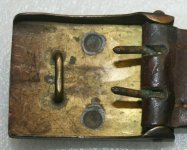I will give it a go. I’m sure I’ve made grammatical mistakes but I think I’ve gotten most of it. I think I should mention that when any Cavalry Regiment was used as infantry, they were equipped as infantry.
World War 1914-1918
After the mobilization, the Regiment moved west into the field on August 7, 1914. It became (part of?) the 1st Kgl. Saxon. 23rd Infantry Division and marched through Luxemburg to the Meuse and then to the Marne. The Regiment received its first enemy contact at Dinant. It was used in the cavalry reconnaissance and patrol service. On September 9, 1914, the Regiment received the order to withdraw from the Marne. This came completely surprising and had a devastating effect after the Regiment's successes in the days before. The Regiment was transferred to the Aisne. This ended its cavalry combat mission. The Husaren were now used in trench warfare and in the rear. In October-November 1914 the regiment was hit by a typhus epidemic. Numerous members of the Regiment succumbed to the disease.
From the end of 1914 to April 1915, the Regiment was assigned to the Rüxleben Cavalry Brigade in the form of a mobile Army Reserve of the VII Army, then it was assigned to the 23rd Infantry Division. The Regiment was now mainly used in trench warfare side by side with the infantry. (cue Brian’s belt buckle).
On July 17, 1916, the Regiment was disbanded and placed under various command units by squadrons: 1st Squadron to the 23rd Infantry Division, 2nd Squadron and staff to the 47th Landwehr Division, 4th Squadron of the 32nd Infantry Division and the 5th Squadron to the 123rd Infantry Division.
The operational areas were the Somme, Champagne, Siegfriedstellung and Flanders. The Husaren were used in trench warfare, on scouting patrols and in sending messages to higher HQ.
The 2nd Squadron was relocated to the east in June 1917 and deployed in Galicia, western Russia and then in Ukraine until the end of the war.
After the armistice in November 1918, the squadrons returned to Bautzen individually by the end of January 1919.
The regiment was demobilized on April 9, 1920, the history of the regiment was over. Husaren Regiment Nr. 20 no longer existed.
The traditions of the Regiment was later taken over by the 2nd Squadron of Cavalry Regiment No. 12 in Grossenhain.
